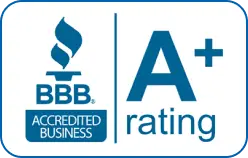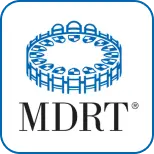Within a closely held corporation, shareholders are often concerned about what might occur if one of the owners dies. Will the deceased shareholder’s family retain the economic value of the corporate interest? Can the surviving owners avoid interference from the deceased shareholder’s family? Will the survivors have the economic resources to redeem the deceased owner’s interest? Given these concerns, owners are best served by structuring corporate buy-sell agreements while they are all alive.
Key Takeaways of Structuring Corporate Buy-Sell Agreements
A legally binding buy-sell agreement protects the business and the remaining owners in the event of death, disability, or departure of a shareholder.
Cross-purchase and stock redemption agreements have distinct tax and administrative impacts, especially regarding estate tax purposes and step-up in basis.
Life insurance is a common funding tool, but alternatives such as installment payments or retained earnings are also viable, especially in hybrid agreements.
Estate inclusion of life insurance proceeds varies based on ownership and control, particularly in family-owned or closed corporations.
Clear valuation methods and buy-sell provisions reduce conflict and help ensure smooth transfers of ownership that align with estate planning and business continuity goals.
Structuring Corporate Buy-Sell Agreements And Their Tax Implications
Owners usually choose from two basic types of buy-sell agreements. With a cross-purchase agreement, each owner of the corporation purchases an insurance policy on the other shareholders. The purchaser is both owner and beneficiary of the policies. Upon the death of a shareholder, the other shareholders are then able to use the life insurance proceeds to purchase the deceased owner’s shares. Another commonly used type of agreement is a stock redemption agreement, in which the corporation owns policies on the lives of the shareholders. When a shareholder dies, the corporation buys the deceased shareholder’s interest in the company with the insurance proceeds.
Cross-purchase agreements. The cross-purchase form of the buy-sell agreement offers several advantages. The family of the deceased owner will have a tax basis equal to the fair market value of the decedent’s stock at the date of death, thus avoiding any income tax consequences as a result of the sale. The fair market value of the shares should be defined by the buy-sell agreement.
The life insurance proceeds received by the surviving owners are not subject to income taxation. For newly purchased shares, the corporate shareholders will be entitled to a tax basis equal to the purchase price. The stepped-up basis should reduce future income taxes if the surviving shareholders later sell their interests. The insurance proceeds are not subject to the corporate alternative minimum tax (AMT) and are also not subject to the claims of corporate creditors. The AMT avoidance and creditor protection exist because the proceeds are paid directly to the individual shareholders.
The cross-purchase form of the buy-sell agreement carries several disadvantages. The plan is difficult to administer if there are numerous shareholders that must buy a plan for each other. For example, for seven owners to cross-purchase life insurance would require 42 (7 ¥ 6) policies. The number of policies can multiply even further if disability coverage is also part of the buy-sell agreement.
Another disadvantage of the cross-purchase agreement is that age or insurability can create a disparity in premiums. Younger or healthier owners may incur higher premiums to cover older and less healthy owners. A possible solution to this drawback is to have the corporation raise salaries to cover the premiums incurred by the owners. Inequities may persist, however, if owners’ marginal tax rates applied to the salary reimbursements are different. Additionally, cross-purchase agreement adopters should recognize that the cost of funding the buy-sell agreement will be greater if the shareholders have a higher tax rate than the corporation.
Stock redemption agreements. Under a stock redemption agreement, the corporation owns policies on the lives of the shareholders. When a shareholder dies, the corporation buys the deceased shareholder’s interest in the company with the insurance proceeds. A prime advantage of the stock redemption agreement is that it is easier to administer for multiple shareholders. An additional advantage to the stock redemption structuring of the buy-sell agreement is that the corporation will bear the premium differences associated with age disparities among shareholders.
trusted by 5,000+ clients
Compare Buy-Sell Agreement Rates
See rates and benefits tailored to your business needs.
The corporation will not recognize income for tax purposes when it receives the insurance proceeds. The corporation must, however, heed the effect of the entire transaction (proceeds received and redemption accomplished) on the earnings and profits of the corporation. The earnings and profits will increase with the life insurance proceeds received and decrease as a result of the stock redemption, so the corporation must attend to the overall net effect on earnings and profits and consider how that might affect the dividend policy to shareholders. For example, in the Exhibit’s Scenario 3, the corporation may have to issue dividends to avoid the accumulated earnings tax on earnings and profits, assuming that the reasonable needs of the business do not justify maintaining earnings and profits above the $250,000 credit (IRC section 535). These dividends would be taxed to the remaining shareholders at ordinary income rates.
A significant disadvantage of the stock redemption form of the buy-sell agreement is that the remaining shareholders do not get the benefit of a step-up in basis when the corporation purchases the deceased shareholder’s interest. The continuing shareholders retain their original bases in the company. Compared to the cross-purchase agreement, the stock redemption structuring will create greater capital gains upon the ultimate disposition of shares if made before death. After the stock redemption is accomplished, however, the corporate assets should be relatively unchanged (the insurance proceeds have been used to purchase the deceased’s interest), but each owner now enjoys a greater percentage of ownership.
Estate tax implications. When a cross-purchase plan exists, the proceeds from the life insurance are not included in the deceased shareholder’s estate. The deceased is not the owner of the policy and, therefore, the insurance proceeds payable at death are not included in the estate. Under a redemption approach, however, the estate tax consequences can become more pronounced when the deceased shareholder has a controlling interest. A shareholder who owns more than a 50% interest either directly or indirectly is deemed to control a corporation, under IRC section 267. In this situation, the shareholder is deemed to have an ownership interest in the life insurance policy due to the shareholder’s ability to designate a beneficiary, as well as other ownership interests. The fact that control exists over the policy in majority ownership instances would result in the proceeds being includable in the deceased’s estate. Thus, the after-tax returns on life insurance policies can be substantially reduced if estate taxes are incurred as a result of the life insurance proceeds being included in the estate.
In the case of family-owned corporations, purchase prices specified by the buy-sell agreements are often disputed by the IRS as not representing fair value. If a corporation owns life insurance for the purposes of funding the redemption of the stock, and the deceased shareholder owns a controlling interest in the corporation, the probability that the life insurance policy will be included in the decedent’s estate is substantial. Note, however, that if the family members own the insurance policy on the decedent, they will receive the life insurance proceeds without including them in the taxable estate. Thus, the cross-purchase option may be preferable to the redemption option.
Valuation Issues of Buy-Sell Agreements
There is a distinct difference between the values that should be established for the two alternative approaches to a buy-sell agreement. This difference is due to the ownership of the life insurance policy. In a cross-purchase agreement, the deceased shareholder has no economic interest in the life insurance policy on his life. Accordingly, the surviving shareholders should expect to pay the fair market value of the underlying net assets, which represents the value of the business operations.
Under the stock redemption approach, the corporation owns the policies, and therefore the value of the corporation includes both the business operations and the insurance policies. The redemption price of a buy-sell agreement should typically include a portion of the life insurance proceeds. If the stock redemption agreement is so structured, the tax implications may be negative, because the life insurance proceeds may be subject to both estate tax and income tax if the decedent is deemed to possess an ownership interest in the policy. Given these tax implications, including the value of life insurance proceeds in the buy-sell valuation price may result in an unsatisfactory after-tax return.
Another valuation issue is that the premiums on older shareholders can be considerably higher than the premiums on younger shareholders. As each unit of stock incurs the same cost, older shareholders will incur higher premiums than they would under a cross-purchase plan. Accordingly, younger shareholders expect to reap a greater benefit from the insurance policies than their older counterparts. Thus, younger shareholders would be entitled to a greater benefit at a lower cost under a stock redemption approach than for a cross-purchase approach.
This scenario suggests that the redemption price should include a portion of the life insurance payments, unless older shareholders are compensated for the disparity in the premiums. This would convert potentially nontaxable deferred income into accelerated taxable income. It would also precipitate similar adjustments for the purchase price for younger shareholders. The proper pricing for a buy-sell agreement becomes much more complex in the case under the redemption alternative.
Funding of the Buy-Sell Agreement
Any buy-sell agreement requires a decision regarding the type of insurance policy to purchase. The initial choice is between term and whole life insurance. Premiums for term life insurance increase throughout the coverage period, whereas premiums for whole life are level throughout the coverage period. If the shareholder dies in the first few years of coverage, the cost of term insurance will be less than the cost of whole life insurance. Conversely, the cost of term life may be much greater than whole life if an individual exceeds the life expectancy used for underwriting the whole life insurance policies.
Whole life insurance with cash value buildups can offer advantages. If policies are held for a significant number of years, the cash values of whole life policies can supplement pension benefits or help fund shareholder buyouts. Additionally, the policy’s cash value is a liquid asset of the corporation that may help secure advantageous loan terms for the company.
Shareholders may choose to forgo whole life insurance and purchase term insurance. The early premiums saved may be invested in the company to either reduce debt or promote growth. In favorable economic conditions, the return on investment will typically be greater than the earnings attributed to the cash value of the whole life policy. The possibility of premium savings in the event of premature death and the excess expected returns on premium differences invested are advantages for term insurance.
In addition to cost, insurability is a key consideration. The ability to maintain life insurance throughout a shareholder’s life is important. Whole life insurance policies grant coverage until death that may not be cancelled by the insurance company. This feature has persuaded many that whole life insurance is the proper means to finance corporate buy-sell agreements. The term life insurance industry has, however, modified its products so that policyholders can purchase term life with the same benefit. This can be accomplished with either a guaranteed insurability option or lengthy (20- to 30-year) policy terms. The addition of a guaranteed insurability option to a term policy will increase the cost of the term insurance. The increased premium, however, will still be lower than whole life premiums in the beginning years. Owners, therefore, must weigh the escalating premium structure of term insurance against the early returns that might be realized by purchasing less-expensive term insurance and investing the premiums saved.
With time, the value of a successful corporation will grow. Assuming the buy-sell agreement ties the purchase price to fair market value, owners should ensure that additional life insurance can be acquired over time to keep pace with the increasing value of corporate shares. Typically, guaranteed insurability options (available on either term or whole polices) allow the policyholder to acquire additional life insurance at timed intervals.
When a shareholder dies, several issues arise with respect to policy ownership by the deceased and the remaining shareholders in the cross-purchase arrangement. The policies insuring remaining shareholders but owned by the deceased will carry beneficiary designations, generally family members. With whole life, the family inherits the cash surrender value of the policies. With no continued business purpose, and out of courtesy to the surviving shareholders, the surviving family beneficiaries may choose to cash out the value of the policies.
Under a cross-purchase approach, the death of a corporate shareholder will not diminish the value of the enduring corporation. Because individuals and not the corporation hold the life insurance policies, the receipt of death benefits or cash values by the policy beneficiaries will not decrease the assets of the corporation. This fact does, however, create a funding issue for the remaining shareholders. The remaining cross-purchased policies will likely not cover the continuing value of the business. The surviving shareholders may need to address the shortfall by purchasing additional insurance if other funds are not readily available.
An alternative to purchasing additional insurance would be to use term life insurance to fund the buy-sell agreement. The value of a term life policy is normally equal to the unearned premium for the year of death, usually very small in comparison to whole life insurance. Given this low value of term life insurance, shareholders should consider purchasing term insurance as joint tenants with rights of survival. The insurance policies could then transfer from the deceased shareholder to the surviving shareholders without triggering the recognition of income upon the death of the insured.
The preceding discussion has assumed that the shareholders can obtain new insurance policies on each other. Some individuals, however, may not be insurable at the time that the buy-sell agreement is adopted. In this case, the only alternative is to use an existing policy of the uninsurable shareholder. Such shareholders hopefully own whole life insurance policies on their lives that have appreciated in value. A shareholder will typically expect to be compensated for the cash surrender value of the policy upon transferring it to either the corporation or fellow shareholders. The most important factor in determining which party to sell the policy to is the tax treatment afforded when the insurance proceeds are ultimately received. If the corporation purchases the policy, the insurance proceeds will not be taxable; if the shareholders purchase the policy, the insurance proceeds will be taxable. The shareholders must weigh the tax advantages of the corporate stock redemption against the tax advantage of using a cross-purchase buy-sell approach. If a policy must be purchased because there is an uninsurable shareholder, the issues are the same as previously discussed except that now the shareholders that have purchased the uninsurable’s policy must pay taxes when the proceeds are received. Recall that although the insurance proceeds will be nontaxable to the corporation when the life insurance proceeds are received, the remaining shareholders must weigh this benefit against the fact that they will not receive a step-up in basis upon the death of the noninsurable shareholder. Accordingly, as the percentage of stock owned by the uninsurable shareholder increases, the likelihood that a stock redemption buy-sell agreement is preferable increases.
Although risk-averse shareholders generally prefer to fund buy-sell agreements through the purchase of life insurance, not all shareholders are risk averse. Risk-seeking shareholders have two alternatives: to invest capital in life insurance to fund the buy-sell agreement, or to invest to grow (or perhaps to sustain) the corporate business operations. If capital funds are limited, shareholders may not have the luxury of funding both alternatives.
Actuaries typically base premiums on a relatively low rate of return to the insured. If it were not for the favorable tax treatment provided by life insurance proceeds, few would use life insurance as an investment. In contrast, the return on corporate business operations, especially in the early years, may yield substantially greater returns than those offered through life insurance. Thus, risk-seeking shareholders may reason that if they live at least as long as their actuarially determined life expectancy, the return on capital invested should be greater for funds invested in the corporation. Another reason not to fund the buy-sell agreement is that buy-sell settlements often occur at the date of retirement—not at death—leaving no need for life insurance to fund the settlement.
Shareholders that decide not to fund settlements with life insurance typically expect that corporate earnings and profits will increase as the corporation matures. In such situations, C corporations often must pay dividends to avoid the corporate accumulated earnings tax. Alternatively, corporations may elect S status, whereby earnings flow through to shareholders and are taxed then at the individual shareholder level. Either way, shareholders will likely incur increased taxes. Regardless of the corporate form, earnings may be strategically accumulated so they can fund needed buy-sell settlements. When the corporation executes the buy-sell agreements, the estate of a deceased shareholder will receive the proceeds for selling the stock without incurring income taxes (the share basis will be the fair market value at the date of death). If the buy-sell agreements are executed at the date of retirement, not at the date of death, retired shareholders will benefit from capital gains treatment. Buy-sell agreements should specify an installment purchase option (rather than the immediate purchase of shares) where time might be needed to accumulate funds for the redemption of the stock (e.g., upon the sudden death of a shareholder).
Combination funding of the buy-sell agreement. Shareholders that are more risk averse may choose a combination approach to funding the buy-sell agreement. A portion of the buy-sell agreement can be funded with life insurance to guard against premature deaths, with the remainder funded by accumulated earnings and corporate profits. For example, shareholders could initiate a buy-sell arrangement to purchase 80% of the stock through a cross-purchase agreement (with funding provided by life insurance), and 20% of the stock would be redeemed by the corporation upon the death of a shareholder. Alternatively, shareholders may opt to initially fund 100% of the buy-sell agreement with a cross-purchase design funded by insurance. The funding of the agreement can then change annually, with the corporation assuming responsibility for purchasing any incremental increases in shareholder value as the corporation grows. This approach eliminates the need for shareholders to increase the amount of life insurance over time. It also provides assurance to the shareholder’s family that it will receive a minimum amount whether or not the corporation can generate the funds needed for the buy-sell arrangement.
trusted by 5,000+ clients
Get Personalized Quotes Tailored to Your Company’s Needs
The combination approach may be especially appropriate for family corporations. Tax law limits the amount of stock purchased by the corporation that can be classified as redemption instead of as a dividend to the sum of the estate, inheritance, legacy, succession taxes, generation-skipping taxes, and funeral and administrative expenses allowable as deductions to the estate of the deceased. Share value in excess of IRC section 303 limitations may be purchased with life insurance proceeds. The basis of this purchase will be the fair market value of the shares at the date of death. To remove the value of the remaining shares from the deceased shareholder’s estate free of taxes, the buy-sell agreement should provide a member of the family an option to buy the stock from the estate. The family member may then choose to exercise the right to purchase remaining shares, as determined by the IRC section 303 limitations. The combination approach (part corporate redemption, part family member purchase) can result in the total value of the deceased’s corporate shares being extracted from the estate without income tax consequences. The case law [see Estate of James J. Durkin, Sr., 99 TC 561 (1992) and Zenz v. Quinlivan, 213 F2d 914 (6th Cir. 1954)] indicates, however, that the taxpayer must not be obligated to purchase the stock.
Frequently Asked Questions About Structuring Corporate Buy-Sell Agreements
What Is the Main Purpose of a Buy-Sell Agreement in a Corporation?
A buy-sell agreement ensures business continuity by legally outlining what happens to a shareholder’s interest after a triggering event, such as death, disability, retirement, or voluntary exit. It protects remaining owners from interference and helps ensure a fair price is paid for the departing shareholder’s interest.
What Are the Key Differences Between Cross-Purchase and Stock Redemption Agreements?
In a cross-purchase agreement, individual shareholders own life insurance policies on each other. In contrast, in a stock redemption agreement, the business entity owns the policies and redeems the deceased owner’s shares. Each structure has different tax, estate, and administrative implications for remaining members.
Are There Tax Consequences Associated With Life Insurance in These Agreements?
Yes. Life insurance proceeds in a cross-purchase plan are generally excluded from the deceased owner’s estate, while in a stock redemption, they may be included, especially if the deceased owned a controlling interest. Cross-purchase agreements also allow for a step-up in basis, which can reduce future capital gains taxes for the other owners.
How Should the Value of a Business Interest Be Determined for a Buy-Sell Agreement?
Valuation should be based on fair market value, using methods such as book value, recent business appraisals, or fixed-price clauses. An effective buy-sell agreement should define the valuation process to avoid disputes and ensure estate planning clarity.
Conclusion and Summary of Structuring Corporate Buy-Sell Agreements
A well-structured buy-sell agreement is essential for protecting the future of a closely held business. Whether through a cross-purchase, stock redemption, or hybrid approach, such an agreement helps safeguard business continuity, ensures a fair exit for departing or deceased owners, and provides clarity to surviving spouses or family members.
Selecting the right funding mechanism, must balance tax consequences, insurability, and long-term business goals. Most importantly, business owners should revisit their agreements regularly to align with changes in ownership structure, valuation, or tax law.














